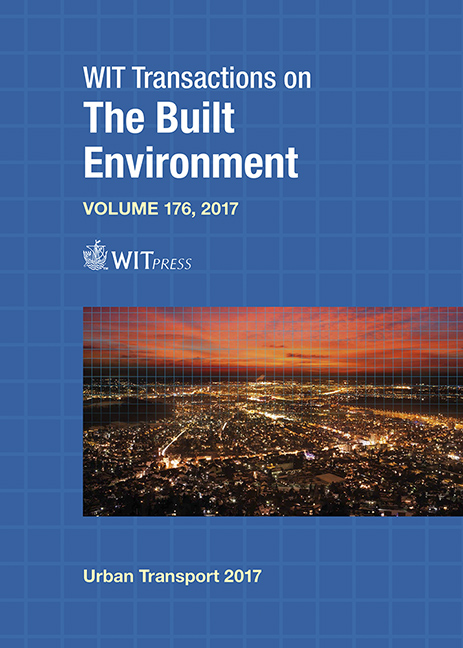SIMULATION RESEARCH ON THE PROCESS OF LANE CHANGE BY A MOTOR VEHICLE STEERED IN AN OPEN- AND CLOSED-LOOP SYSTEM
Price
Free (open access)
Transaction
Volume
176
Pages
12
Page Range
181 - 192
Published
2017
Size
630 kb
Paper DOI
10.2495/UT170161
Copyright
WIT Press
Author(s)
MIROSŁAW GIDLEWSKI, LESZEK JEMIOŁ, DARIUSZ ŻARDECKI
Abstract
Within a more extensive research project, analytic work and simulation research was undertaken on the use of an active steering system for the automatic performing of a lane-change manoeuvre. Based on the general optimal control theory, a controller algorithm was developed, where a simplified reference model of the lateral dynamics of a motor vehicle, known as a “bicycle model”, was used. The controller generates a reference signal of the steering wheel angle and corrects this signal by means of Kalman regulators, applied to minimize the deviations between the reference and actual signals representing the variables that describe the vehicle trajectory. In spite of quite complicated functions, the algorithm having been developed is characterized by a simple and, at the same time, effective analytical description. For the algorithm to be validated, it was subjected to extensive simulation tests. In these tests, the steered object was a two-axle motor truck of medium load capacity, driven with quite a high speed. The vehicle model (3D, nonlinear, of the multi-body simulation (MBS) type, experimentally verified) made it possible to describe the vehicle dynamics even in extremely difficult operation conditions, where wheel lift-off and significant tyre slip values may also be encountered. In this paper, a fragment of this work has been reported, with presenting information about the controller and results of simulation testing of the dynamics of the lane-change process performed in an open-loop system (without regulators) and in a closed-loop system (with regulators) for different variants of model parameters. To assess the effects of changes in the model parameters, not only comparisons between the curves recorded were made but also integral sensitivity indicators were used. The subject matter of this work may be reasonably expected to arouse interest both in specialists working in the field of mechatronic control systems in motor vehicles and in the researchers who are engaged in exploring the problem of structural sensitivity of nonlinear dynamic systems.
Keywords
active safety, active steering system, lane change manoeuvre, computer modelling and simulation, effective reference model, time-optimal “bang-bang” control, Kalman regulator





